Happy Habitat
Header Image: Anhinga
Miles and miles of miles and miles. That was the description of west Texas landscape we heard from more than one Texan as we settled into our new neighborhood. Exploration of the area confirmed the truth of the statement. Most of those miles, at first glance, appeared completely inhospitable. Upon closer examination, we discovered the most incredible array of life forms which had learned to adapt to what, for us, was an extremely harsh environment.
That was in the early 1970’s and once we learned how and where to look, our time in west-central Texas remains among our most cherished memories of finding a fascinating natural place.
Meanwhile, 1400 miles to the east.
“Look at that butterfly!” Gini directed me to the dull orange Variegated Fritillary resting next to a brown leaf on the ground. Fritillaries, swallowtails, skippers, crescents – the grass edges of the road were alive with color! Today we’re ambling through the Bridgewater Tract of the larger Tenoroc Fish Management Area a few miles away. There are eight lakes in this area and included are wetlands, sandhill pines and a bit of oak/hickory/bay woodlands.
As we enjoyed our fresh tangerines and bananas at the edge of one of the lakes, Brown Pelicans and Ospreys crashed the water’s surface to retrieve their own breakfast. On either side of us, Blue-gray Gnatcatchers and Northern Parula warblers scoured tree limbs for anything that moved. At one of the boat ramps, our first fall Belted Kingfisher acknowledged our presence by abruptly flying away with her loud rattle of irritation. Terns are normally associated with salt water, but we have a small colony of Caspian and Royal Terns which remain inland here all year. We watched a Royal Tern demonstrate its aerobatic prowess over one of the lakes.
A combination of plentiful clean water, wetlands, forest and some open fields produces a favorable habitat for many species of life here. Nature tries to ensure equilibrium and, as long as humans don’t interfere too much, this place is a wonderful spot to explore. Often.
A Northern Mockingbird has not quite completed its seasonal molt. Even when ragged looking we think it’s a handsome bird.

The Royal Tern can be distinguished from its slightly larger relative, the Caspian Tern, by a more orange bill with no dusky tip and a cleaner white forehead.

Most areas visited recently have large numbers of Spicebush Swallowtails (Papilio troilus) actively feeding. This is a female, showing a blue swash at the base of her wings. Males display a more greenish color.
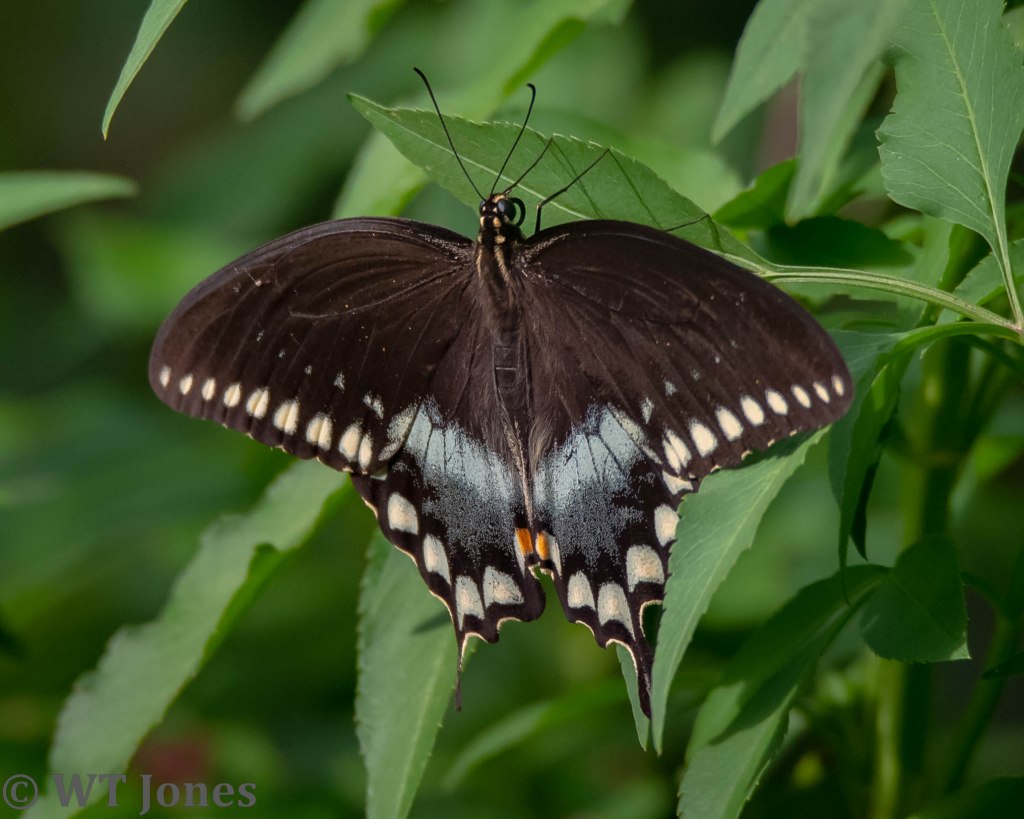
Very likely a fall migrant, this female Belted Kingfisher made it be known very loudly she didn’t appreciate us interrupting her morning fishing session.
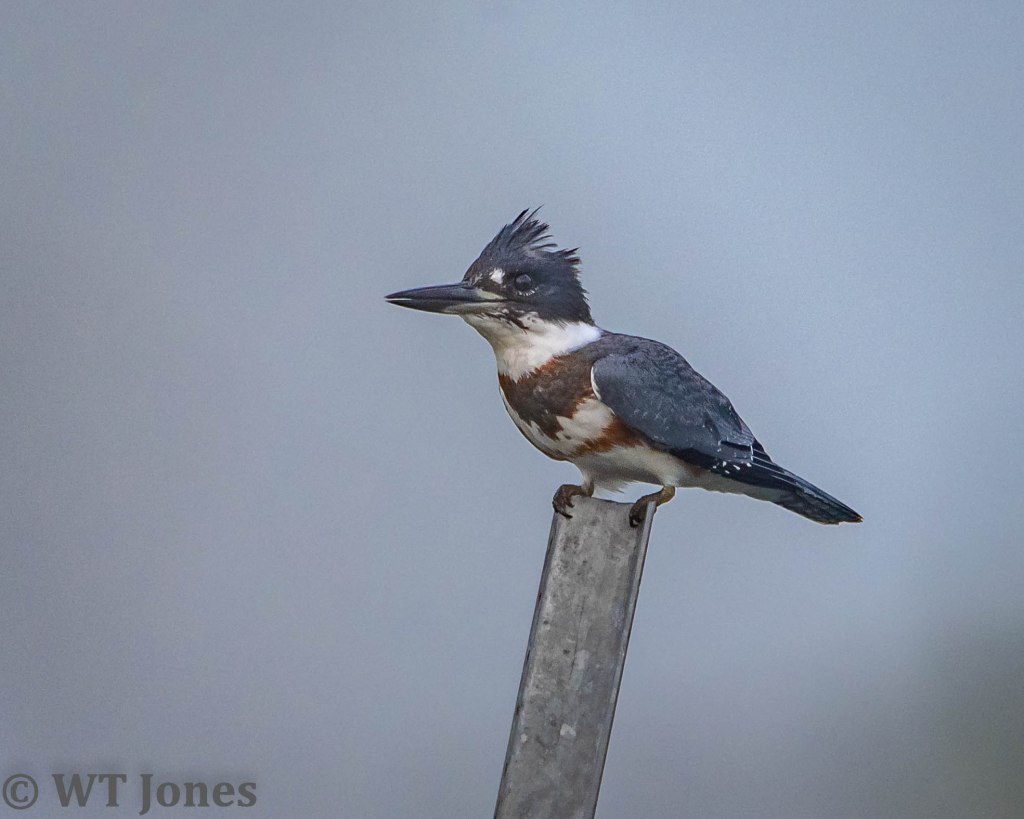
It would be easy to pass by this Variegated Fritillary (Euptoieta claudia) as it almost blends in with the brown oak leaves littering the ground. Unless your companion happens to be Gini with the keen brown eyes.
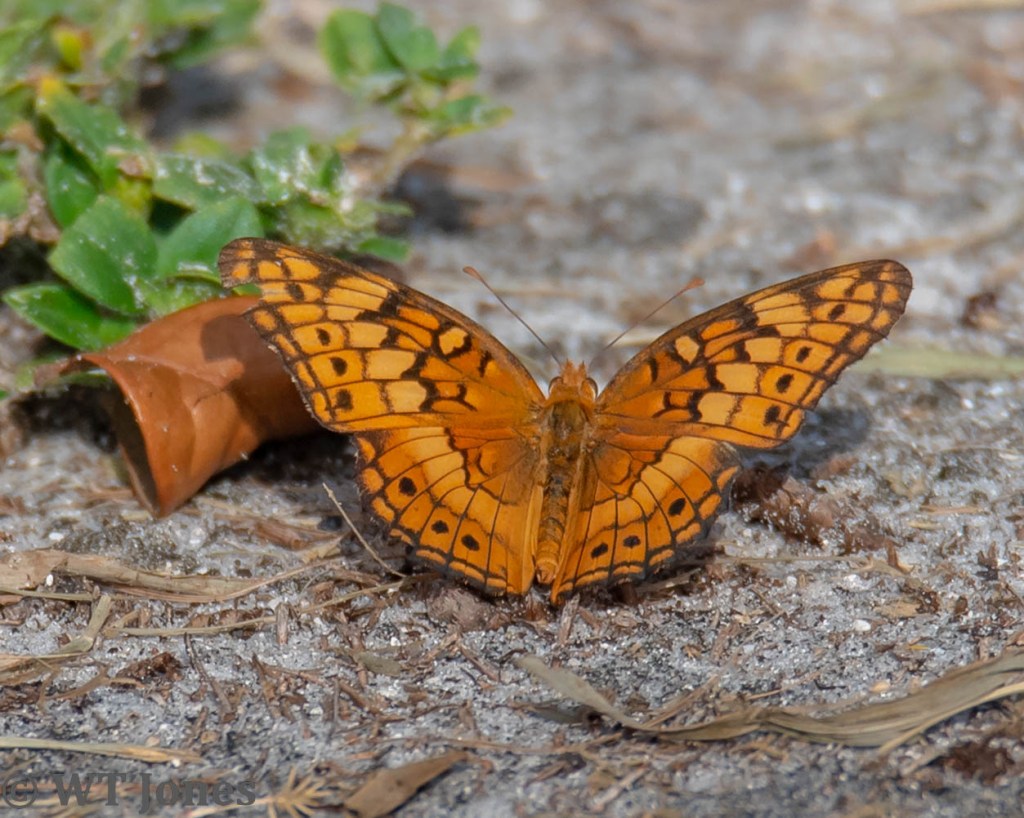
All the lakes in the area attract a large number of fishermen. And fisherwomen. And fisher-children. Not to mention fisher-birds, such as a gorgeous Tricolored Heron.

Even the bugs like it here. Near the water’s edge at this time of year we usually find good numbers of Rambur’s Forktail (Ischnura ramburii). The field guide describes this species as a “large” damselfly. They have a different definition of “large” than what I thought it meant.

Throughout Florida one of the most ubiquitous water birds is the Anhinga. Unlike many water birds, their feathers are not waterproof, and they must spend a lot of time drying their wings. We grew up calling these “water turkeys” due to the shape of their head and broad tail.
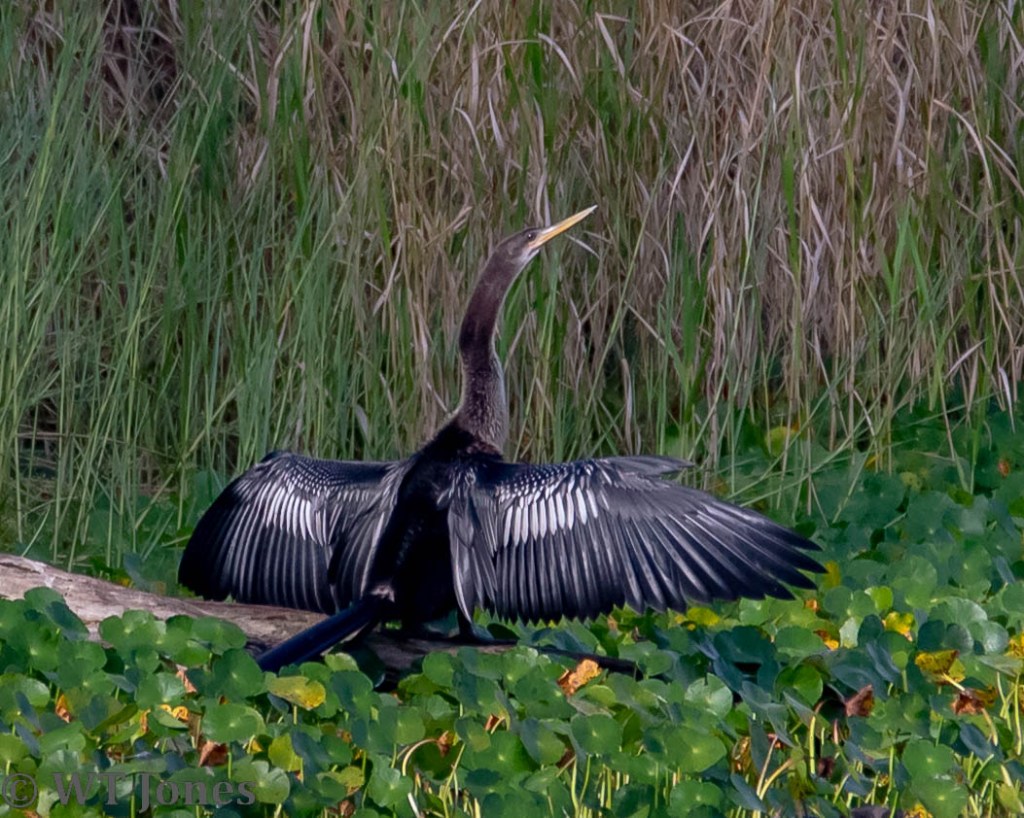
Red Bull Assassin Bug (Repipta taurus). Sounds scary. I love it. Any bug which dines on aphids, flies and mosquitoes is a true friend!

Reluctantly, we headed to the house. Near the exit gate we bade farewell to one of nature’s centurions, a Red-shouldered Hawk.
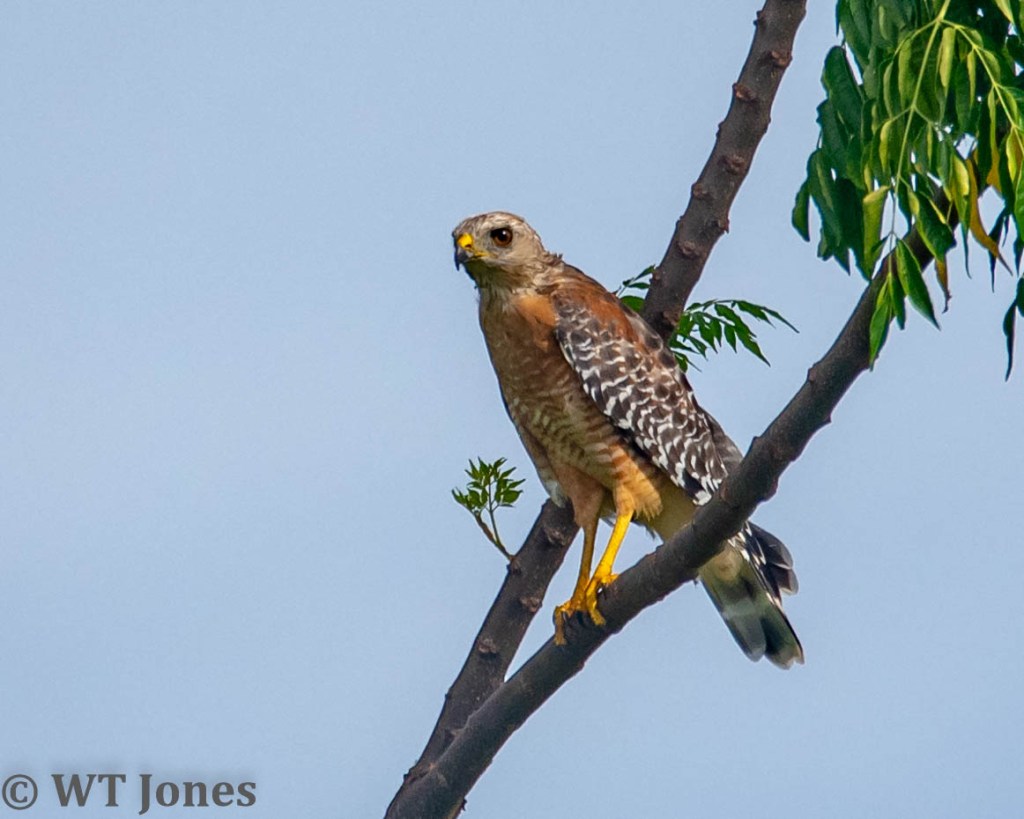
Whether it’s semi-arid west Texas or semi-tropical central Florida, nature provides a suitable habitat for a startling array of living things. Discovering it all is a happy hobby.
Enjoy your search for a natural place and come back for a visit!
Another refreshing walk with Wally and Gini – I truly enjoy seeing your world thru your lens.
LikeLike
Thank you, Sam.
We’ll keep walking and clicking.
LikeLiked by 1 person
Red Bull gives you wings, Assassin Bug variety. And yes, anything that eats mosquitoes is a true friend. You found a wonderful variety of creatures on this visit. All fine images. I am envious of the kingfisher shot. Try as I might over the years, I’ve only managed one decent image of one.
“as long as humans don’t interfere too much” is a most excellent proviso for enjoying nature. Leave everything as you found it..
LikeLike
Thank you, Steve.
Insect variety is so incredible. I need to spend more time taking just a macro lens so I can concentrate on their unique beauty.
I have found the best method to achieve a decent photograph of a kingfisher is luck.
A new week! A foggy morning! Time to get outside!
LikeLiked by 1 person
After looking at that molting mockingbird, I had an urge to get up and look in the mirror. I ended up applying a comb, in hopes that I’ll not be mocked too badly when I finally go out the front door.
That’s a wonderful photo of the Anhinga. I’ve only seen one of those, and I didn’t realize what I’d seen until looking at its photo later. It was the bill that finally gave me the clue: straight, and not hooked.
I so enjoy the variety shown in your posts. The Variegated Fritillary really caught my eye this morning. The Gulf Fritillary is beautiful, but this one is its equal. And lucky you, to have a lens capable of capturing the Kingfisher. I’ve never been able to get close enough to one for a decent portrait — but the attempt does provide an opportunity to enjoy that call!
LikeLike
If all it took for me not be mocked was a comb, I’d be a happy old bird.
For us, the Anhinga is a bit like that Mockingbird or the grackles. So abundant and familiar that we tend to ignore them. Shame on us. (Okay, shame on me.)
The Kingfisher can be a bit jittery. Patience, grasshopper.
LikeLike
Thank you for another enjoyable post. I learn so much about Florida’s wonderful flora and fauna from your repeated forays into nature and really hope to experience them first-hand one of these days.
LikeLike
Thank you, Tanja.
We’ll keep exploring as long we are able!
LikeLiked by 1 person
Same here!
LikeLike
A very, very happy post. And beautiful. Hooray for the natural world and the slow realisation (hopefully not too slow) that we NEED it.
LikeLike
Thank you, EC!
Just like here, you have so much beauty all around you. We appreciate the glimpses you share.
You are so right about NEEDING it!
LikeLike
The Swallowtail is gorgeous, the Fritillary more so.
Love the Kingfisher photo.
Thanks for another looksee around your patch. It’s turned a bit autumnal here all of a sudden, maybe time to go look for some birds around these parts.
LikeLike
We are really blessed with beautiful stuff to look at around here!
Finding it and getting a good picture is a constant challenge. But if it was easy, everybody would do it. We wouldn’t want that now would we?
Have a great weekend!
LikeLiked by 1 person
You certainly do have some fabulous habitat local to you, Wally – so rich in flora and fauna. I nearly wrote that I was envious, but then realised that we don’t do too badly in my own area of UK (although a serious decline is more than obvious) – it is just that, for the most part, it is very different in so many ways. Nevertheless, I’m still drooling over your photos, having been uplifted by your words.
My very best wishes to you and Gini – – – Richard
LikeLike
You are right, Richard. Good natural habitat exists but sometimes takes effort to find it. And it can be so different from place to place.
Your kind words once again make our day better.
LikeLike